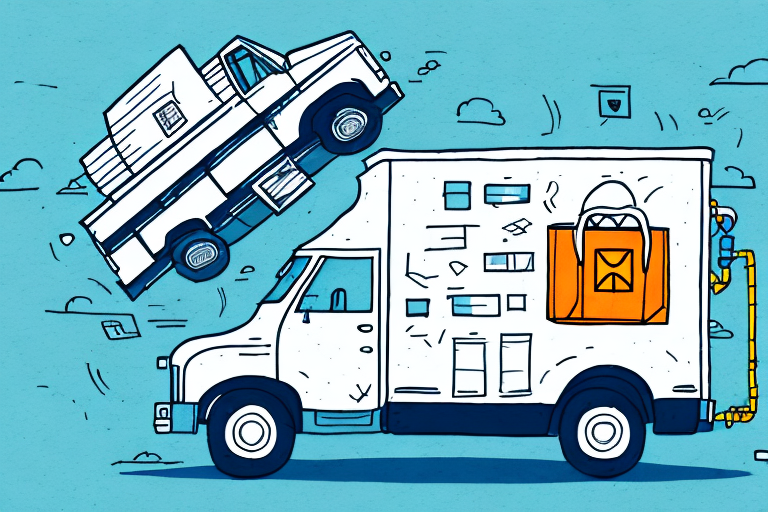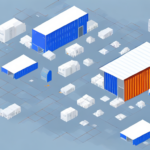How On-Demand Delivery Tracking Can Elevate Your Business
In today’s fast-paced marketplace, customers demand swift and reliable delivery of their orders. On-demand delivery tracking plays a crucial role in meeting these expectations by providing real-time visibility into shipment movements. This article explores the fundamentals of on-demand delivery tracking, its benefits, and best practices for implementation to help your business thrive.
Understanding On-Demand Delivery Tracking
The Basics of On-Demand Delivery Tracking
On-demand delivery tracking is a system that enables businesses to monitor the journey of their shipments from the warehouse to the customer's doorstep in real-time. Utilizing technologies such as GPS, RFID, and barcode scanning, companies can gather and relay shipment data instantly. This real-time information allows businesses to make informed decisions, optimize delivery routes, and enhance overall operational efficiency.
Types of Tracking Systems
- GPS Tracking Systems: Utilize satellite technology to provide accurate location data of delivery vehicles.
- RFID Tracking Systems: Use radio frequency identification for tracking goods without direct line-of-sight.
- Barcode Scanning Systems: Employ barcodes to catalog and track items throughout the delivery process.
Each tracking system has its own advantages and can be selected based on the specific needs and scale of your business.
Benefits of On-Demand Delivery Tracking
Improved Efficiency and Productivity
Real-time tracking allows businesses to optimize delivery routes, reducing transit times and fuel costs. According to a Statista report, optimizing delivery routes can lead to a cost reduction of up to 20% in logistics expenses.
Increased Customer Satisfaction and Loyalty
Customers appreciate the ability to track their orders in real-time, which enhances transparency and builds trust. A survey by Qualtrics found that 80% of customers are more likely to return to a business that offers real-time tracking information.
Streamlined Operations
On-demand delivery tracking provides businesses with comprehensive visibility into their supply chain, allowing for the identification and resolution of bottlenecks. This leads to smoother operations and the ability to scale effectively.
Cost Savings and Environmental Impact
By optimizing delivery routes and reducing unnecessary mileage, businesses can save on fuel costs and minimize their carbon footprint. According to the EPA, transportation accounts for nearly 28% of total greenhouse gas emissions in the United States, making route optimization a significant factor in sustainability efforts.
Choosing and Implementing the Right Tracking System
How to Choose the Best System
- Cost: Assess your budget and evaluate the cost-effectiveness of different systems.
- Compatibility: Ensure the tracking system integrates seamlessly with your existing infrastructure.
- Scalability: Choose a system that can grow with your business needs.
- User Interface: Opt for a system that is user-friendly and easy to navigate.
- Security: Prioritize systems that offer robust data protection and security features.
Implementation Tips and Best Practices
- Conduct a Thorough Needs Analysis: Identify your business requirements and objectives before selecting a system.
- Engage Stakeholders: Involve all relevant parties in the decision-making process to ensure buy-in and smooth implementation.
- Choose a Reliable Vendor: Partner with vendors known for their reliability and excellent customer support.
- Train Your Staff: Provide comprehensive training to ensure your team is proficient in using the new system.
- Test Before Full Deployment: Conduct pilot tests to identify and resolve any issues before a full-scale rollout.
Overcoming Cost Barriers
The initial investment in on-demand delivery tracking can be substantial, especially for small businesses. However, there are strategies to mitigate these costs:
- Leasing Equipment: Spread out expenses by leasing necessary hardware and software.
- Partnering with Logistics Providers: Collaborate with third-party logistics companies that offer tracking services as part of their package.
- Gradual Implementation: Start with a basic tracking system and upgrade as your business grows.
Evaluating Return on Investment (ROI)
Before implementing a tracking system, it's essential to assess the potential ROI. Consider factors such as reduced delivery times, lower operational costs, and increased customer retention. According to a study by Harvard Business Review, businesses that implement effective delivery tracking systems can see up to a 15% increase in operational efficiency.
Real-Life Examples of Successful Implementation
Many leading companies have successfully integrated on-demand delivery tracking into their operations:
- Amazon: Invests heavily in its own tracking systems to provide accurate delivery estimates and enhance customer experience.
- UPS: Utilizes advanced GPS tracking to optimize delivery routes, saving millions of dollars annually in fuel costs.
- FedEx: Offers detailed shipment tracking, allowing customers to monitor their packages every step of the way.
In the food delivery sector, companies like Grubhub and Uber Eats use tracking systems to provide customers with real-time updates on their orders, reducing delivery times and increasing satisfaction.
Challenges and Solutions in Implementing Tracking Systems
Addressing Common Challenges
Implementing an on-demand delivery tracking system is not without its challenges. Common obstacles include data security concerns, system compatibility issues, and resistance to change from employees. To overcome these challenges:
- Enhance Data Security: Invest in robust cybersecurity measures to protect sensitive information.
- Ensure Compatibility: Choose systems that integrate smoothly with your existing technologies.
- Foster Change Management: Communicate the benefits of the new system and involve employees in the transition process.
Evaluating and Maximizing ROI
To maximize ROI, continuously monitor the performance of your tracking system and make necessary adjustments. Utilize analytics tools to gain insights into delivery operations and identify areas for improvement. This proactive approach ensures that your investment yields the desired benefits.
The Future of On-Demand Delivery Tracking in E-Commerce
As e-commerce continues to expand, the demand for efficient and reliable delivery services will grow. Future advancements in on-demand delivery tracking are expected to include:
- Artificial Intelligence and Machine Learning: Enhancing predictive capabilities for more accurate delivery estimates.
- Internet of Things (IoT): Integrating smart devices for better monitoring and automation of logistics.
- Blockchain Technology: Ensuring data integrity and improving transparency across the supply chain.
Staying ahead of these trends will be crucial for businesses aiming to maintain a competitive edge in the dynamic world of e-commerce.
Conclusion
On-demand delivery tracking offers a myriad of benefits, including improved efficiency, enhanced customer satisfaction, and cost savings. By carefully selecting the right tracking system and following best practices for implementation, businesses can harness the full potential of this technology. As the e-commerce landscape evolves, embracing advanced tracking solutions will be essential for sustained growth and success.




















